Cleveland State University Unveils CSU 2.0
Innovative growth plan calls for 20,000 students and 200 new faculty by 2025.
Cleveland State University has unveiled an aggressive, growth-oriented plan for emerging from the global pandemic a stronger, more-focused institution.
The plan – CSU 2.0 – sets a goal of 4,500 additional students and 200 new faculty members by 2025. It outlines multi-million-dollar investments in research, faculty positions and initiatives to advance student success, develop new programs and build new partnerships. CSU President Harlan Sands presented the plan to the university community live on Facebook on March 26.
“CSU 2.0 is a bold, forward-thinking, aspirational vision for our future,” Sands said. “This is about growth, not retrenchment. We’ve set ambitious, achievable goals. We’ll be serving more students, distinguishing ourselves as a leading urban public research institution, and expanding our role as an anchor institution in the region to better serve and support greater Cleveland.”
According to Sands, the plan builds upon the university’s momentum over the last several years. He noted that applications for admission are up for fall 2021 semester. First-year student retention rates have risen significantly, and the university has been investing in its core academic mission by hiring new faculty at a time when other universities are making cuts.
CSU 2.0 is built on four themes – setting the university apart for student success/engaged learning, distinction as a leading public research university, strengthening its role as an anchor institution/becoming a “beacon” institution and building financial strength.
Student Success and Engaged Learning
By setting itself apart from its competitors on student success and engaged learning opportunities, the university envisions growing enrollment to 20,000 students by 2025. The plan calls for a new $1 million annual investment in need-based financial aid, doubling the number of students living on campus to 3,000, developing “cradle to career” support systems for students, launching an Office of Career Development and Exploration and ensuring all students have an opportunity for a paid internship or co-op.
“It’s all about helping students graduate and move on to successful careers,” Sands said. “They are the core of our mission. We have an opportunity to create a national brand for CSU as having the best price-value proposition in higher education.”
A Leading Public Research University
CSU 2.0 calls for significant investments in faculty and research initiatives. The university plans to hire 200 new faculty in strategic areas like health, smart manufacturing, applied social sciences and data analytics. The university hopes to increase external research funding from $30 million to $50 million by 2025 and will invest $20 million in faculty start-ups, lab infrastructure and seed funding.
The plan provides a roadmap for building upon the university’s strengths to develop world-class programs. Initiatives include new programs in areas like data analytics and smart/sustainable manufacturing, building on the highly rated City Management & Policy Program, and growing the center for Gene Regulation Health and Disease into a premiere biomedical research center.
The university also plans to realign its colleges to better reflect its strengths, including a newly focused College of Health Professions; an enhanced College of Urban Affairs, Social Sciences and Education; and a College of Arts and Sciences.
“Reducing the number of colleges from eight to six and re-aligning their composition to build out our strengths will create new recruiting and investment opportunities and drive growth,” Sands said. “It creates more opportunities for multidisciplinary collaboration while enabling us to streamline support services and reduce some administrative costs.”
An Anchor Institution for Greater Cleveland
Since its inception, Cleveland State has served as an anchor institution for greater Cleveland. CSU 2.0 envisions strengthening that role by building out undergraduate and graduate degree programs focused on emerging workforce trends and supporting research that addresses the needs of the community.
In January, Governor Mike DeWine and Jobs Ohio announced that the university would be the lead public higher education partner in a five-member consortium focused on making Northeast Ohio more competitive in the burgeoning healthcare and IT sectors. The university plans to leverage that $20 million investment to establish an Urban Public Health Institute and double the number of certificates and graduates in 19 STEM-related fields.
“We are so proud of our role as one of Cleveland’s critical anchor institutions. As an urban public research university, we will always be about serving our community,” Sands said. “It’s now time to become a beacon institution, where we attract investment and the best and brightest individuals from around the region, nation and world.”
Build Financial Strength
CSU 2.0 will build upon the solid financial foundation established over the past several years, as evidenced by the university’s strong financial balance sheet, cash reserves and enrollment stability.
CSU 2.0 calls for the development of a new resource allocation model that better aligns resources with the priorities of the college deans and vice presidents, while providing incentives for strategic growth.
The plan also identifies a number of opportunities to reduce costs and increase efficiencies.
The university plans to launch a capital campaign to increase private funding to CSU.
“Thanks to the progress we’ve made, we’re in a sound financial position, but there are still opportunities for efficiency,” Sands said. “These cost-savings measures will allow us to invest in what’s important – student support, new faculty and more competitive salaries for faculty and staff.”



